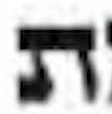Recovering our Hebraic Consciousness –
Jewish history is the prototype for the creative tension and energetic interplay between subjugation and freedom, between local action and global consciousness, between narrow unidirectional thought and open-ended systems thought, between spiritual and material realms, and between being rooted in one’s own culture and exploring others. This tension and interplay can become the stimulus and raw material for forging new directions for art in our era of globalization.
Alexenberg, Mel. The Future of Art in a Digital Age: From Hellenistic to Hebraic Consciousness (pp. 16-17). Intellect Books Ltd. Kindle Edition.
Hebraic thought celebrates dynamic, multiform, time- centered, open systems in which spirituality is drawn down into every part of our daily lives. Rather than a quest for purity of form in some heavenly realm, Judaism seeks to reveal spirituality in the rough complexities of earth-bound living.
Alexenberg, Mel. The Future of Art in a Digital Age: From Hellenistic to Hebraic Consciousness (p. 17). Intellect Books Ltd. Kindle Edition..
Post Holocaust and Post 1948 estbablishment of the State of Israel, we are witnessing the rediscovery and recovery of our Hebreic Consciousness from two phases of our Jewish history. Both the Prophets and the Rabbis felt the necessity to subjugate the Hebraic consciousness in the service of the survival of the Jewish people.
The prophets could not bear the impression that the gods of the other peoples could over power the God of the Israelites. The Rabbis turned this sentiment into the powerful negation of life in exile – “because of our sins we have been exiled from our land.”
The Legacy of the Prophets – Defeats demonstrate the global power of the God of Israel.
As the historian, Martin Noth, develops the notion, the prophets would not accept
that “ the God of Israel was now succumbing to the gods of the victorious Assyrians who appeared to be proving themselves even stronger, and in whose name and at whose
behest the conquering Assyrian kings, as they solemnly aver in their inscriptions, were taking the field.” (Noth, The History of Israel, P. 256)
Rather it was the God of Israel “proving Himself to be the God not of a tribal confederation…but the Lord of the World, standing above the whole of human history.”(P. 256)
Indeed, it was the prophetic notion that “;it was God’s purpose to execute an annihilating judgment on the present condition of this people because of its unforgivable
faithlessness and disobedience.The prophets dared declare that God was using the whole history of the ancient Orient for this one purpose”(Noth, P. 256)
The loss of political independence brought with it a sense of impotence which was projected onto a potent God and then later the ultimate male Father God. Exile reinforced the sense
of sin and punishment, a rationalization of suffering.
The Legacy of the Rabbis – The Father God who has Exiled us from our Land.
The historian, Ellis Rivkin, suggests that it was the Pharisees who developed the teaching of God the Father. Rivkin writes:
“God, so the Pharisees taught, was preeminently a Father, not only the Father of a people, but the Eternal Father of the individual. He was the Father who was always there, always available, always just, merciful, and understanding. Unlike one’s human father. He was not mortal and transient; He was not imperfect; He was not only sometimes available. And, unlike one’s real father. He could penetrate into one’s inner self and evaluate and measure the loyalty to His Law. There was no escaping His eye, for as a Father he was personally concerned with every one of His children and their salvation. The realization that the Father in Heaven had a personal interest in the meanest of individuals, one who was neither prophet, priest, nor scholar—and that this Father was the very one who had created the entire universe and had wrought awesome wonders for Israel—could hardly have left any individual unaffected. The sense of worth, of self-esteem, of dignity, of equality that it generated must have been intoxicating.”
(The Shaping of Jewish History. P. 57)
Intoxicating, yes, but also repressive. The security was bought at a price. The price was the throwing off of a more balanced human sexuality in favor of a more repressive mode.
Recapturing the freshness of our Biblical Past
What kept Judaism and the Jewish people alive through the centuries was not only the hope of a full return to political independence but also the literature of its existence as a free, independent entity. Robert Gordis writes of the Song of Songs:
“The freshness of the poetry, the naturalness of the references to the Palestinian landscape, and the unabashed attitude toward love all seem to point to the period before the Babylonian exile. No national disaster had yet east its shadow over the temper of the people, and there is no echo as yet of the deepening of the religious consciousness which followed the restoration under Cyrus and the reforms of Ezra and Nehemiah.”
(Gordis, The Song of Songs. KTAV, P.
Judaic consciousness vs. Hebraic consciousness
Gordis reflects “there is no echo of the religious consciousness” a consciousness herein referenced as Judaic consciousness.




